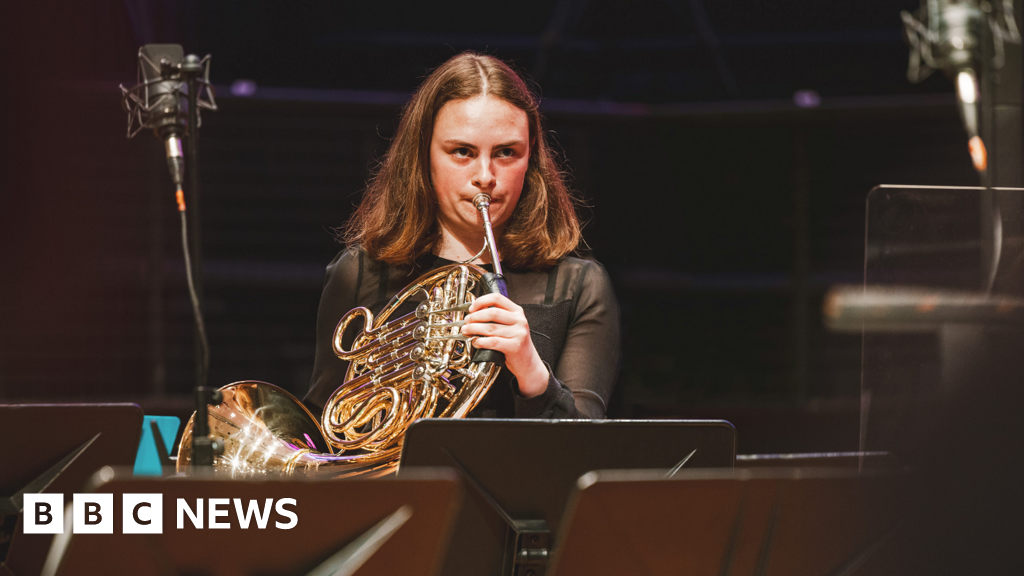- Breaking News
The relationship between humans and AI
时间:2010-12-5 17:23:32 作者:Mobility 来源:Explainers 查看: 评论:0内容摘要:Russian President Vladimir Putin speaks to journalists after his phone talks with U.S. President Donald Trump at the Sirius Park of Science and Art outside Sochi, Russia, on Monday, May 19, 2025. (Vyacheslav Prokofyev, Sputnik, Kremlin Pool Photo via AP)Russian President Vladimir Putin speaks to journalists after his phone talks with U.S. President Donald Trump at the Sirius Park of Science and Art outside Sochi, Russia, on Monday, May 19, 2025. (Vyacheslav Prokofyev, Sputnik, Kremlin Pool Photo via AP)
The sun rises over the tundra, Wednesday, Aug. 7, 2024, near Churchill, Manitoba. (AP Photo/Joshua A. Bickel)It’s not just polar bears.

University of Washington’s Laidre said some scientists think the smallest water zooplankton called copepods are the most important animals in the Arctic. They’re fat heavy and the staple of bowhead whales.But copepods live on the smaller plant plankton that’s changing. The timing of when copepods can prosper is changing and new species are moving in, “and they are not as lipid rich,” Laidre said.“It’s not that nothing lives out there,” York says while gazing on the Bay. “It’s that the things that are living in the North are changing and looking a lot more like the South.”

What’s happening in the Hudson Bay is a preview of what will hit further north, Stroeve said.An ice scientist, Stroeve says there is just something about polar bears that is so special.

“It really just makes you so happy to see them, to see an animal living in such a harsh environment,” Stroeve said. “And somehow they have survived. And are we going to make it so that they can’t survive? That makes me sad.’'
Read more of AP’s climate coverage at“The future is being able to really take production to a scale that has impact,” said Parraguirre Díaz.
Follow AP’s coverage of Latin America and the Caribbean atWASHINGTON (AP) — Human-caused
dialed up the thermostat and turbocharged the odds of this month’s killer heat that has been, a new flash study found.
- 最近更新
- 2025-07-07 03:29:53guide Dual-Eligible Medicare & Medicaid Coverage
- 2025-07-07 03:29:53guide Dual-Eligible Medicare & Medicaid Coverage
- 2025-07-07 03:29:53What has happened to Ukraine’s refugees?
- 2025-07-07 03:29:53Sánchez torpedoes Nato unity on eve of crucial summit
- 2025-07-07 03:29:53Chandler Jones, former San José State football star, dies in highway crash at 33: Rep…
- 2025-07-07 03:29:53US bombs nuclear sites in Iran
- 2025-07-07 03:29:53USA TODAYStorm tracker: Andrea weakens in Atlantic, system in Pacific could become tropical storm
- 2025-07-07 03:29:53The 10 most entertaining terraces in London
- 热门排行
- 2025-07-07 03:29:53Rechargeable Waterproof Headlamp Flashlights (two-pack)$16$25Save $9with coupon
- 2025-07-07 03:29:53Leaders risk getting into a shouting match with Donald Trump over increased defence spending
- 2025-07-07 03:29:53Trisha Yearwood’s Easy Baked Beans
- 2025-07-07 03:29:53Taiwan has upped the ante in the cold war over chips
- 2025-07-07 03:29:53Angel Hair Pasta with Clams, Cherry Tomatoes, and Basil
- 2025-07-07 03:29:53The June, Even All-Time, Heat Records Set Or Tied In The Northeast, Midwest, So Far
- 2025-07-07 03:29:53our guide to the top car insurance myths
- 2025-07-07 03:29:53Carmakers push back against Apple’s takeover of the dashboard
- 友情链接
- Photos: Russia launches ‘horrific’ attack on Kyiv Cobalt price jumps as DR Congo extends export ban The relationship between humans and AI Trump calls for immediate boost in US oil production Half a century on, the English chess explosion is a fading memory Pope Leo identifies AI as main challenge in first meeting with cardinals Is the US losing its place as the world leader in science? Can AI be held accountable? AI ethicist on tech giants and the AI boom Will Donald Trump’s Golden Dome protect America? The best exhibitions to see in London this weekend Musk commits to stay as Tesla CEO for another five years The relationship between humans and AI Photos: Russia launches ‘horrific’ attack on Kyiv opinion content. Lex. Defence tech spies an opportunity in global crisis Photos: The history of Netanyahu’s rhetoric on Iran’s nuclear ambitions How a ‘Gold Mafia’ is looting Southern Africa, washing dirty cash In nixing EV standards, Trump strikes at two foes: California and Elon Musk Qatar closes airspace amid fears of Iran retaliation Chinese couple charged with smuggling toxic fungus into US Fed official Michelle Bowman calls for rate cuts as soon as July The relationship between humans and AI Cobalt price jumps as DR Congo extends export ban Parallel economy: How Russia is defying the West’s boycott F1 owner Liberty Media targets US growth with MotoGP Who are the Gold Mafia? Godmen, conmen and a president’s niece Half a century on, the English chess explosion is a fading memory Photos: The aftermath of Israeli strikes on Tehran opinion content. Lex. Defence tech spies an opportunity in global crisis In nixing EV standards, Trump strikes at two foes: California and Elon Musk Photos: Trump’s military parade amid ‘No Kings’ mass protests across US
